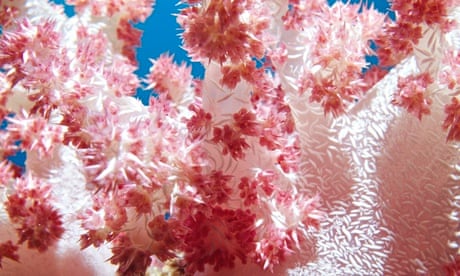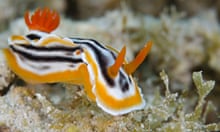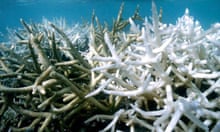A coral reef is a busy neighbourhood. In warm, shallow, tropical waters, clownfish mill among sea anemones; sponges and seaweeds jostle against each other; crabs and snapping shrimps lurk defensively amid the knobbly branches.It's a cornucopia of life. "About a third of all marine diversity sits in coral reefs," says Professor Jörg Wiedenmann, head of the Coral Reef Laboratory at the University of Southampton.
At the heart of the reef's ecosystem are coral polyps – soft-bodied animals related to sea anemones. As larvae, they attach themselves to robust underwater structures such as rocks or even sunken wrecks, cementing themselves to the surface by secreting calcium carbonate. Their principle: divide and rule. After securing a spot, polyps bud to create large colonies of genetically identical individuals, connected by soft tissue, that together form the corals of the reef. When they spawn, they generally do it in sync.
But the reef is a cut-throat environment, rife with predators and prey. To survive, some species have developed partnerships, born of necessity.
Cutting one of the most crucial deals is the coral itself. Within their transparent tissues, the polyps house colourful unicellular algae called zooxanthellae. These rely on waste products from the coral to manufacture nutrients by means of photosynthesis, which they share with their hosts, supplementing the coral's diet of passing zooplankton. "This is a very intimate relationship," says Wiedenmann. "If this breaks down, most of the coralseventually die."
Known as coral bleaching, it's a dramatic separation that leaves a ghost-town of devastation. And it's triggered by stress. "Bleaching is basically the cry for help of the corals," says Wiedenmann. Changes in the water's temperature, salinity and nutrient levels can all affect the zooxanthellae, interfering with their ability to photosynthesise. To prevent damage from rising levels of toxic chemicals, the polyps lose the algae, leaving a bleak, white, wasteland. But without zooxanthellae, the coral cannot survive, and eventually the reef crumbles apart. "The whole structure will turn to rubble and this three-dimensional framework that is so important for the coral reefs will be lost," says Wiedenmann.
Coral bleaching is only one of the threats to these vast, beautiful, structures – overfishing, coastal development and water pollution also cause devastating harm. Balancing the reefs' role as a food source with sustainability is vital to their survival, as is improving water quality and tackling global warming to combat rising ocean temperatures and acidification. Only then will the future for these incredible ecosystems begin to brighten. "There is certainly hope," says Wiedenmann, "but we need to do something for it."



Comments (…)
Sign in or create your Guardian account to join the discussion